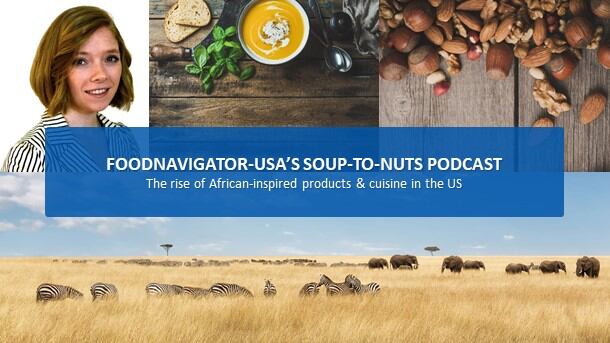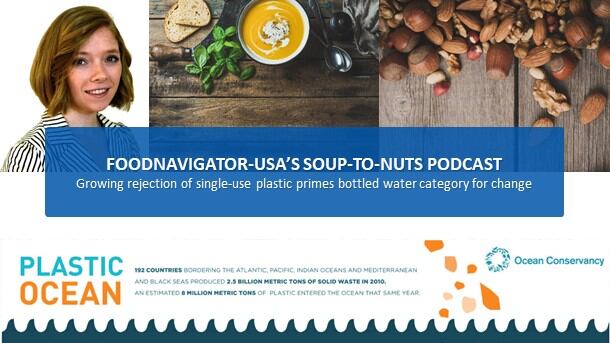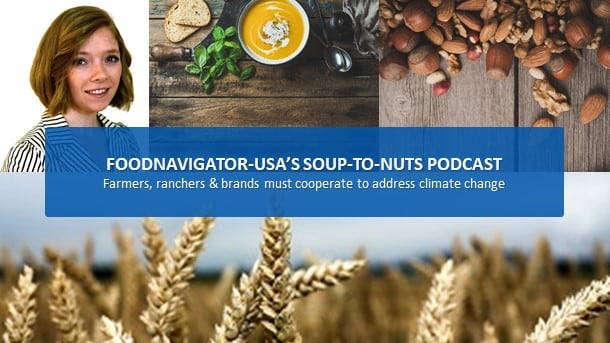Over the past year at tradeshows and in retail outlets, several players – both well-established and newcomers – have introduced products that play with the fiery heat of exotic African chilies, the sweet and sour tang of fruit grown on the continent and the diverse textures of grains commonly used in the region but that are not as common in the US.
In this episode of FoodNavigator-USA’s Soup-To-Nuts podcast, entrepreneurs and established brands offering African-inspired products talk about what is driving consumer interest in the region, how they are meeting this rising demand, and what challenges they are negotiating as the expand their reach in a new territory.
Nando’s PERi-PERi is paving the way
In many ways, America’s budding love of African inspired flavors and cuisine began as a flirtation in the safety of a restaurant where the stakes for trying something new were lower and the trust was higher that it would be prepared ‘correctly.’
In particular, Nando’s PERi-PERi is credited for much of America’s awareness and love of African – or at least southern African cuisine. The restaurant, which boasts more than 1,200 locations in five continents is well-known for its grilled chicken which is marinated first for 24 hours in its namesake PERi-PERi sauce. The popularity of the sauce quickly exceeded the reach of the restaurants and prompted the brand to expand into major US retailers with five flavors – the secret and history of which Paulo Oliveira, Nando’s senior vice president of North American Grocery explains.
“The story of peri peri is it was kind of discovered by the Portuguese navigating along the coast of Mozambique. It is a chili, it is called African Bird’s Eye chili, and the Portuguese added staples you would find around the world, so some garlic, oil, onion, spices and they came up with the unique recipe… that has spread out over the entire world,” he said.
The sauce and dishes at the restaurant were so popular that the company decided to bottle it so that people who were not near one of its locations could still enjoy it.
With the sauce already in more than 10,000 of the biggest retailers in the US including Whole Foods, Safeway, Kroger, Walmart and more, the company is now looking at how else it can deliver the flavor beyond in sauces, including in snacks, fresh prepared foods and other options.
More sauces and flavors on the way
Nando’s international success has inspired others from Africa to enter the US market, including Great Hearts of Africa, which this summer entered negotiations with an importer to bring its sauces to America.
As the company founder Doris Macrae explained to FoodNavigator-USA, Great Hearts of Africa is not just about heat from chilies, but also about showcasing the diversity and versatility of Africa flavors. She does this by blending regional fruits with the chilies to create sauces that can be used on everything from barbeque to pizza.
Makomas bottles flavors in teas, juices
Hot sauces and condiments are not the only way that entrepreneurs are showcasing the flavors of Africa. Magbe Savane, the president of Makomas, is using ready to drink teas and juices to share the flavors of her homeland in West Africa with the US.
Her products include hibiscus, moringa, baobab, fresh ginger, beets, turmeric and other ingredients that lend not only flavor but functional health benefits as well, she said.
For Savane, making the product is not enough – she also wants to give back to the community in Africa where the ingredients are sourced. She does this in a variety of ways, including teaching farmers and families how to save the money they earn from her or use it to grow their wealth.
Woodland Foods navigates challenge with importing from Africa
While the potential for African products and flavors in the US is immense, there are notable challenges – mainly balancing authenticity with what Western palates expect and building reliable supply chains.
Both of which the specialty ingredient supplier and product manufacturer Woodland Foods is negotiating, according to the company’s director of sales and marketing Robert Linder.
“Woodland Foods is doing some really exciting work. We have two of our team members who are over there now helping to establish the supply chain. We have done presentations and work with the UN and other NGOs over there to help develop the supply chain that can be brought to Europe and North America in line with food safety regulations as well as commercial scalability infrastructure,” he explained.
Once the ingredients get here, they must be carefully blended and formulated into products that Americans understand and want, he noted.
Woodland Foods does this by creating easy to mix sauce bases, breakfast cereals and other shortcuts that make the flavors and ingredients easier for Americans to use.
For example, the company offers the West African grain fonio as a chia-spiced hot cereal that is at once adventurous and familiar. They also offer it as a cous cous or rice alternative.
The company also offers two types of dukkah spice blends – one that is more traditional and one that is allergy friendly.
Other flavors and foods from Africa that the company is watching emerge in the US include the Ethiopian spice blend berbere, harissa and as already mentioned peri peri sauces, like the ones popularized by Nando’s.
Obviously, Africa is a continent with a rich diversity of cultures and diets – and as such these flavors and formats are only scratching the surface of what the countries there can offer. Making it a trend to continue watching in the future.




